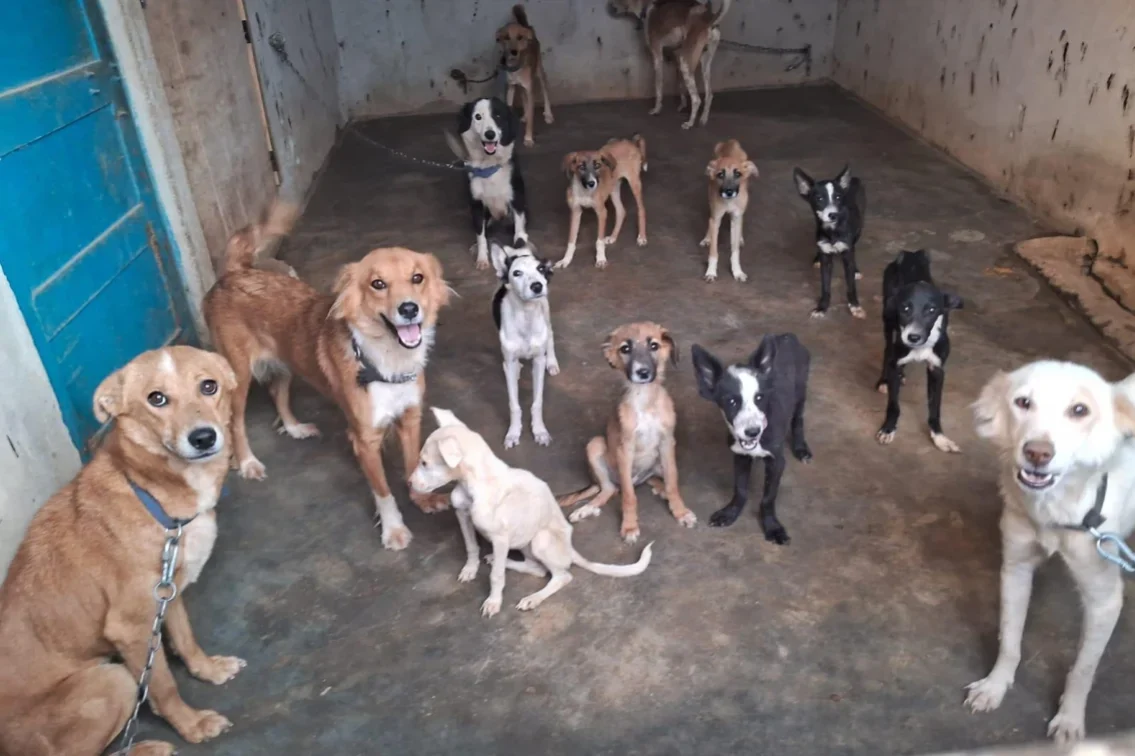Training your dog can be a fun bonding exercise for both of you. It’s also a demonstration of good discipline when your commands for dogs are followed as intended.
You can train your dog, by using positive reinforcement techniques. Essentially, this means that you reward your dog with something he likes every time he does what is intended. In this manner, he learns to associate that particular action with a positive reaction from you and knows that he will be rewarded every time he performs it.
The dog training commands list that we will be exploring in this post are as follows:
- Sit command
- Come command
- Fetch command
- Stay command (aka Wait command)
- Lay down command
1. Teaching a Dog To Sit
Once you know how to train a dog to sit on command, essentially the same formula for training can be applied for different commands with different actions.
To begin teaching your dog how to sit, take a treat close to the dog’s nose so that he can smell it first. Once this has caught his attention, move the treat up so that he follows the treat – just above his head. Lure him with how you position the treat so that he will need to sit and lift his head up to nibble at the treat. As soon as he ‘sits’ to get to the treat, say ‘sit’ and let him eat the treat.
Repeat one or two times and reward him as soon as he sits. Once he starts sitting automatically in anticipation of the treat, you should say ‘sit’ when you offer the treat. He will gradually correlate the word ‘sit’, with the action of sitting and a subsequent reward.
Every time he sits on command he must be rewarded, for this to become a habit.
A Sneak Peek into Our Charity for Dogs – VOSD has rescued 8,000+ dogs, given 250,000+ state-of-the-art free treatments
2. Teaching a Dog To Come To You
One of the easier commands to teach is the ‘come’ command, since dogs love coming to their humans! Begin training in a quiet indoor room with no distractions. First, sit with your puppy and say the word ‘come’, and give him a treat. Easy? Now quickly take a few steps back while saying ‘come’ – the puppy should chase you, and when he does, reward him. Coming to you should be fun! You can even reward the puppy with praise and toys.
Gradually, increase the distance between you and the puppy and every time the puppy ‘comes’ to you, reward him. When training the puppy outside, use a long leash first to ensure the puppy is always within your reach and safe, incase is distracted instead of coming to you.
Don’t grab the puppy when he approaches, since he might find this confusing or stressful. Don’t call your dog using this technique to punish – ever! This will mean coming to you implies trouble and so the reverse idea of avoiding you, will be learnt instead. Always reward your dog for coming to you – you are their safety net, always!
3. Teaching a Dog To Fetch
Some dogs instinctively know how to run after a toy you’ve thrown and bring it back to you. While most, either wonder why you’ve thrown a perfectly great toy into the distance and stare at you or run after it and catch it, but have no intentions of returning it to you.
Needless to add, to begin with, make sure it’s a toy the dog really likes, otherwise nothing else will help. If your dog does not follow after the toy, it’s helpful to start playing up close – generate the dog’s interest in the toy first, and then throw it. A strategy that usually results in the dog going after it successfully. Then comes the task of teaching the dog to bring it back to you.
To encourage bringing the toy back, it can help to use a second toy that the dog likes as much or a treat that they like. Every time the dog returns to you for the second treat or toy on offer, with the toy in his mouth, ask him to drop it, and then reward him with a treat (or by throwing it back if that makes him happier!). Eventually, he will learn that it’s rewarding to return the toy to you, and will keep doing it.
4. Teaching a Dog To Stay / Wait
The sit, stay dog commands can be combined as one action – where the dog needs to ‘stay’ in the sit position.
While teaching the dog to stay or wait, it’s easier to first get the dog to ‘Sit’. Then, let your dog smell a treat from your hand and give the command, ‘stay’, as you take a few steps away from him. If the dog stays and waits, reward him with a treat. If the dog attempts to follow you or the treat by getting up, say ‘no’ and gradually move a few steps away from the dog. This way, he will learn to distinguish when he is doing the right thing – by waiting; and when he is not doing what is expected by moving towards you.
For the dog to learn this thoroughly, you will need to repeat this several times a day. This is a useful command to teach dogs, especially when you may have guests over who are not comfortable with very active dogs. This will give them the space to slowly get comfortable with them.
5. Teaching a Dog To Lay Down
In this step, we explain how to train your dog to lie down. This is a tad bit more challenging to teach since the dog needs to be in a passive position, when he is excited by the treat. It’s often easier to simply use the command ‘down’ for this step.
Begin by placing a treat with a strong smell in your fist. Then move your fist closer to the dog’s nose and once he has smelt it, place your hand on the ground and wait for the dog to follow. Next, slide your hand on the floor to lure the dog to follow the food in a lying down position. As soon as the dog lies down on the floor, give the command ‘down’ and reward him with the treat. Repeat, until the dog associates the command with the lying down position and reward him every time he does.
Now that you have an idea of the teaching process, here are some ideas for commands that you could teach your dog using positive reinforcement techniques –
- Leave it command – useful if your dog has a knack for picking up things that are not always meant for him.
- Heel command – the heel dog command is useful for dogs to learn to follow you during walks.
- Watch me command – useful for your dog to stay focused on you, especially if he has a tendency to get distracted or aggressive around other people or dogs.
Training takes time: Remember to be patient
When a dog acts on command, he makes the process of training a dog look easy. However, the journey to get to that point requires a lot of patience. Dogs don’t speak our language, and teaching a dog how to associate meaning with our words requires time. You can’t rush this process and each dog learns at it’s own pace.
Choosing the right reward for positive reinforcement is also a key part of the process. If your dog is extremely tempted to receive the reward being offered, he is more likely to make an effort to earn it. If the treats you are offering are not ‘high-value’ enough for him, he is likely to be less enthusiastic about this process as well.
Patience, repetition and persistence are the three key points to keep in mind when trying to teach new dog training commands. Here are some more tips to keep in mind when training a dog:
- Be patient. Like you would be patient when teaching a child something new, dogs require the same level of understanding from you.
- Be consistent – don’t keep changing techniques or names of commands. This will only confuse your dog.
- Don’t push the dog too hard when you begin. This needs to be a fun exercise for your dog.
- Avoid distractions nearby so that your dog can focus entirely on you.
- Dogs have short attention spans, so keep these training exercises short and simple. When your dog loses interest, stop for the time being.
- Never punish your dog – he won’t understand why he is being punished and the exercise will become stressful for him if you do.
- Practice the commands with your dog at home first before demonstrating them publicly.
- Positive reinforcements require you to reward the dog for being a good learner and every time he does what is expected of him.
- Show, don’t force your dog to do what you want. Forcing your dog will not help him learn anything and will instead make him find that action stressful.
- Teach the dog one command at a time. When he masters one command, only then begin the next command otherwise it can become confusing for the dog.
- Training your dog should be fun and exciting for both of you!
- Dogs love playing and you should think of yourself as his play buddy through this process.
Even if you are fostering or looking after someone else’s dog, teaching the dog these commands could also be a great way to spend time with the dog and earn brownie points with the pet parent! Read this for some more tips on how to be the perfect pet-sitter for a dog.





